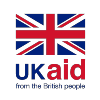We know that it can be tempting to tell a single story to persuade and influence action and change. But one story alone cannot reveal the complex realities of working children. Lasting change depends on understanding what actually pushes and pulls children into child labour. This is why a large part of the Child Labour: Action-Research-Innovation Consortium in South and South-Eastern Asia (CLARISSA) programme is rooted in evidence from over 800 hundred life stories shared and analysed by children in worst forms of child labour.
Embracing the complexities of many stories
On the World Day Against Child Labour, we are calling on those designing and shaping policies and programmes to end child labour to embrace the complexities found in the diverse stories of children’s lived reality. CLARISSA is working with teams in Nepal and Bangladesh to bring together many stories of children working in the most dangerous and exploitative environments. These are still early days in the programme, but what we can see already is that the stories paint a very complex and nuanced picture.
We need to listen to children and hear about their lives and experiences if we are to debunk cliches and assumptions, i.e. avoiding the ‘raid and rescue’ approach without any real understanding of why children are working in these environments and thereby failing to address the drivers. As CLARISSA’s Senior Participatory Action Researcher, Pragya Lamsal in Nepal explains “nuanced accounts show how poverty, peer pressure, family breakdown and betrayal” all together lead to children being forced to work in exploitative environments – and often within informal and unregulated settings.
In CLARISSA, the stories children are telling us and analysing are not necessarily for sharing beyond the research. And that is ok, as they are not our stories to tell. It may seem counterintuitive, but the stories are just the beginning of a large-scale action research intervention that will enable children to seek their own solutions based on their own evidence. We are working with the premise that if children can share and analyse their own stories, they will generate the best and most sustainable solutions for better kinds of work. Children need to be recognised as experts in their own lives.
Better work for children
We support the effort to end child labour by 2025, but we must also be realistic about where we are. Faced with the reality of worsening economic situation as a direct result of the global pandemic, the situation of many working children is getting worse, not better. Many children have been forced into even more perilous work. We know this from our country teams’ preliminary research on the adult entertainment sector in Nepal and in the leather sector in Bangladesh.
The priority must be getting those children who are currently working in hazardous environments and dangerous working conditions into better and safer work. The stories collected so far evidence many pathways in and out of these types of work. Indeed, the pandemic has exacerbated an already vulnerable situation and pushed many families into crisis with reduced income impacting their ability to buy food and pay rent. In the leather sector, as employers are laying off workers, the lives of many families that depend on the income become more precarious, and if they were not already, children have now become the breadwinners for their families. Many children are faced with the stark choice to undertake dangerous work or go hungry.
In the adult entertainment sector in Nepal, in their efforts to contain the virus, the government, like many others, forced this sector to close completely. On average over 50,000 workers including minors under 18 are directly involved in this business. However, despite the closure of the sector, the activities did not stop and children were pushed into more vulnerable and hidden circumstances.
Calling for immediate action
While we support the efforts of many child rights advocates for better regulation and enforcement in the supply chains of the large global brands, it is critical to recognise that the most exploitative and dangerous forms of child labour happen in the informal sector.
The work that needs to be done is to change the business model of hundreds of thousands of small and family businesses that operate in the shadows and to improve working conditions. This is much harder than talking to governments and large businesses, but where the most immediate change needs to happen. To do this, our starting point is listening to children, who are the experts in their lives.
